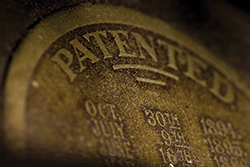Universities and Intellectual Property Law
Universities and colleges face intellectual property (“IP”) issues on a regular basis. The World Intellectual Property Organization (WIPO) refers to universities as “factories of the knowledge economy” that can utilize patents and copyrights to “disseminate the knowledge they generate and to have that knowledge used in the economic sector.” In other words, universities and public research institutions are large producers of IP through their research programs while also being large consumers of IP as they educate their students.
» View the PDF
Who owns an invention developed at a university?
 Universities are in a unique position when it comes to patents. Professors, researchers, and students generate a great number of inventive concepts through research for which patents can be pursued. However, given the collaborative nature of research, there are ownership issues. Most graduate students and researchers are required to transfer ownership to the university for inventions that result from their research and studies. On the other hand, undergraduates, absent some other agreement, are normally allowed to retain ownership of inventions they develop while in school.
Universities are in a unique position when it comes to patents. Professors, researchers, and students generate a great number of inventive concepts through research for which patents can be pursued. However, given the collaborative nature of research, there are ownership issues. Most graduate students and researchers are required to transfer ownership to the university for inventions that result from their research and studies. On the other hand, undergraduates, absent some other agreement, are normally allowed to retain ownership of inventions they develop while in school.
Ownership issues can vary tremendously when it comes to professors. For example, when professors move from university to university, their research travels with them. In such instances, joint ownership issues arise. In addition, professors can have agreements in place with the university that allow the professor to retain certain rights as well. However, in most instances, professors are required to assign their rights to the school.
Funding also impacts ownership rights. For example, while it is very prestigious for professors to obtain research grants, in most cases the benefactor will retain rights to the intellectual property that is generated from the research. This is especially true for government-funded research grants. Further, universities are research-driven institutions – development of commercial results is not their mission. Therefore, most universities will license the IP derived from the research to the private sector. As a result, universities must maintain a balance of satisfying the licensees’ commercial needs while also protecting the universities’ rights in the IP.
How does publication affect patent rights?
Another patent issue that frequently occurs with patents in the university setting is the impact that the push to publish can have on patent rights. The nature of research institutions requires that professors, graduate students, and other researchers, in order to gain tenure, increase their reputation amongst the scientific community by publishing their research and its results in a continuous and rapid fashion. However, the rush to publish research can have an adverse impact on patent rights. This is especially the case when the publication occurs before a patent application directed to the same information/inventive concept is filed. In such instances, the publication can be classified as a prior art disclosure that can prevent the acquisition of patent rights.
I can see how copyright and patent issues arise, but what about trademark issues?
Trademark issues also affect universities on a consistent basis. Just as universities own trademarks related to their athletic teams, they also own trademarks related to publications and to products that are generated by their research. Therefore, universities face the same burdens of traditional commercial entities to register and enforce such marks.
What type of copyright issues do universities face?
Universities are great distributors of information, including that which is developed from professors and other university sources. With that in mind, universities must make sure that they are diligent in protecting their copyrights from abuse from others, while also making sure that they do not infringe other’s copyrights.

For example, who retains the copyright for works generated by professors, students and the like? Does a university own copyright in research papers that are submitted to peer review publications? What about a professor’s book on a particular literary subject? Who owns graduate students’ dissertations? Universities must have well-established copyright policies in place to make sure these ownership issues are addressed before they come to a head.
Another new issue that has appeared in the digital age is online learning and the copyright issues that it generates. For example, for distance learning, who owns the rights to video-captured lecture – the professor or the university? What happens when a student records a lecture and posts it online – does the school have the right to request the video be taken down? To combat these issues as they occur, universities must develop policies that clearly lay out who owns the copyrighted material and what rights students have to information.
Lastly, professors frequently use other’s copyrighted material under the fair use doctrine. The fair use doctrine is the right to use portions of copyrighted materials without permission for purposes of education, commentary or parody. While it is an established doctrine, it does not protect all uses of copyrighted material. Therefore, to avoid uses that aren’t protected by fair use, universities should establish a copyright policy that outlines what uses by professors of others’ copyrighted works are covered by the fair use doctrine.
 Matt Warenzak is a partner in SGR’s IP Practice. He specializes in patent litigation, patent prosecution, and trademarks. He is an experienced general IP counsel, handling and litigating issues from all forms of IP matters, including patent, copyright, trademark and licensing.
Matt Warenzak is a partner in SGR’s IP Practice. He specializes in patent litigation, patent prosecution, and trademarks. He is an experienced general IP counsel, handling and litigating issues from all forms of IP matters, including patent, copyright, trademark and licensing.

